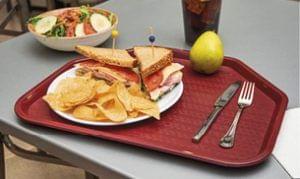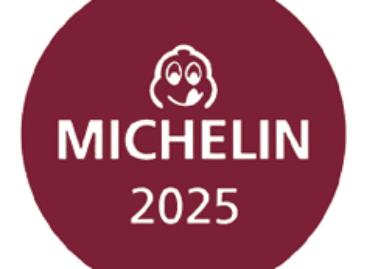Magazine: Who is eating from my plate?
No matter how tasty the food is, if it is served on a worn-out and broken plate – and guests have to eat it with an overused knife and fork – they won’t say it is good. Our magazine asked the representatives of three public sector catering companies about the tableware situation.

Judit Tóthy
marketing director
GasztVitál
According to Judit Tóthy, marketing director of GasztVitál, simple white porcelain products are the most widely used in public sector catering. As for schools, the best choice for the little ones is lighter polycarbonate tableware. Dishes and cutlery are used for a year on average. The company only uses porcelain tableware in workplace cafeterias, in many shapes, colours and sizes. When sourcing products, GasztVitál pays attention to many factors, not only the price – they make no compromises when it comes to quality. It depends on the target group and food type which models they opt for.

Csaba Enyedi
director of
communications
Hungast Csoport
Csaba Enyedi, director of communications of Hungast Group revealed that they also believe in quality. The tableware they use is of high quality, safe and it looks nice. What is more, they also keep environmental aspects in mind. Máté Hatolkai, managing director of Gödöllő Kalória KHT told our magazine that they had started to switch to unbreakable tableware, which looks just like ‘uniset’ porcelain dishes. These items don’t get chipped and are much easier to wash. He reckons that tableware can’t be used longer than one year in general, because the items get scratched and simply look overused after a while. The company is really looking forward to using the new PET-G plastic tableware.
Ms Tóthy talked to Trade magazin about single-tray serving being used in healthcare institutions, for which so-called menu mobile sets are used. The plastic, box-shaped tray keeps the food warm and a whole menu can be served in it; however, the special tray can also be used in combination with preheatable porcelain or polycarbonate plates.


Máté Hatolkai
managing director
Gödöllő Kalória KHT
Mr Hatolkai added that the single-tray serving system used in hospitals costs HUF 24,000-32,000 per set – the same cost for an ordinary cafeteria is about HUF 3,000. He is sure that the future is definitely the usage of long-lasting tableware, as it produces less waste and generates lower cost for the public sector catering companies.
Mr Enyedi had rather big news: he told that Hungast had teamed up with manufacturing technology experts to develop a new type of food storage solution, which would replace less environmentally friendly tools used, e.g. disposable plastic plates used on a daily basis. He also stressed the importance of using special, extra heat-resistant, unbreakable and migration-resistant plastic dishes in schools. //
Related news
The Ministry of Agriculture supports the preservation of short supply chains with several measures
🎧 Hallgasd a cikket: Lejátszás Szünet Folytatás Leállítás Nyelv: Auto…
Read more >A special official inspection has been launched into the mass illness of kindergarten children.
🎧 Hallgasd a cikket: Lejátszás Szünet Folytatás Leállítás Nyelv: Auto…
Read more >Sustainability challenges in public sector catering
🎧 Hallgasd a cikket: Lejátszás Szünet Folytatás Leállítás Nyelv: Auto…
Read more >Related news
Ice cream as a season-extending product
🎧 Hallgasd a cikket: Lejátszás Szünet Folytatás Leállítás Nyelv: Auto…
Read more >The stars were shining bright
🎧 Hallgasd a cikket: Lejátszás Szünet Folytatás Leállítás Nyelv: Auto…
Read more >(HU) Egy egészen hatékony kempingfőző – A nap videója
🎧 Hallgasd a cikket: Lejátszás Szünet Folytatás Leállítás Nyelv: Auto…
Read more >






